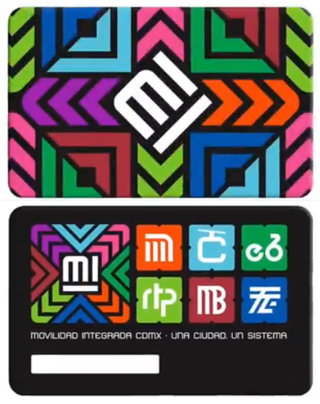Mexico City Essentials
Getting around
Public transport
The network is comprised mainly by:
- Metro (subway)
- Metrobus (red buses that move in a confined lane)
- Trolebus (blue trolleybus)
- RTP (green buses)
In all cases, you can access using a rechargeable card (tarjeta MI). You can buy/recharge this card at any subway station or other places. You can also recharge through the “app CDMX” on your phone. One card can be used by many people.

Remember that Mexico City is one of the most populated cities in the world. Buses and subways tend to be crowded during rush hours or trapped in traffic jams, there are no fixed schedules.
There are other types of buses that do not belong to the main network, here you will have to pay with cash, and they tend to be lower-quality.
Uber
Moving around using Uber is also quite common, the app is available in the city.
Bicycle
There is a public bike sharing system called “Ecobici”, you can borrow a bike but you need to register first.
On Sundays, car traffic is banned on the main avenues (like Reforma), so people can move around the city using a bike or jogging, rolling skating, etc. This is a nice way to get to know the city (from 8:00 to 14:00). Check here for extended info.
Tourism bus
There is a tourist bus that covers several routes around the city, it is called the “turibus”. Check the schedules, prices, and where to board here.
Arrival
- You can take an official taxi from the booths in the airport hall (Yellow cab, Sitio 300, etc). They are safe and not overpriced, and you pay in advance.
- You can take the Metrobus (red buses) that will take you to the city center. Take line 4 and get off at “Bellas Artes” or “Hidalgo” stop, depending on your hotel location. You will need to buy and top your MI transport card first
- Uber is also very good option (but it is not always allowed at the airport, check first)
- There is also a subway station (Metro Terminal Aérea) close to Terminal 1, but it is not the best option for getting into the city center (several transfers due to closures). It is not recommended if you carry heavy luggage or it is late at night.
General info
Tourism
The conference venue is located in the very city center. There are many sites of interest nearby. For example:
- El Zocalo (the main central square)
- Monumento a la revolución
- Museo Templo Mayor (museum with the remains of the ancient city that lies below current central Mexico City)
- Torre Latinoamericana (a skyscraper with a viewing platform)
- Edificio de Correos (Historic postal palace)
- Museo de antropología e historia (Museum about the indigenous cultures all over Mexico)
- Castillo de Chapultepec (a historic castle inside an urban forest)
- Art Museums: Museo Nacional de Arte, Museo Soumaya
- You can take several walking routes through the city center
For more info, visit this official guide (available in English).
Please note that if you want to travel to some archeological site or town outside the city, you will have to take a foreign bus or rent a car (no trains available).
Safety
- In Mexico City, tap water is usually NOT drinkable (unless the place where you are staying explicitly states otherwise). It is recommended that you buy bottled water.
- The city is generally safe and walkable (also public transportation). However, as in other big cities, watch out for your belongings and avoid walking alone late at night. Also, be cautious when crossing avenues or streets with heavy car traffic to prevent accidents.
- There is no need to exchange large amounts of money at the airport. You can use your credit/debit cards, make contactless payments, or retrieve cash at any ATM in the city. Remember that cards may not be accepted in small businesses or street food places.
- Emergency numbers: 911 or 55 5658 1111.
- In the unlikely event of an earthquake, Mexico is equipped with a network of sensors and alerts. If you hear an alarm on the city speakers, it means that you have time to leave the building or locate yourself in a safe place before the earthquake strikes.
Language and Etiquette
- Spanish is the most spoken language in the city. You will only find English translations in a few places. However, people are usually friendly and willing to help.
- Some neighborhoods have a more international presence. For example, “La Condesa” and “La Roma” are neighborhoods with trendy restaurants and cafes where English is more widely spoken.
- Tipping is not mandatory, but it is widely expected (around 10% to 15%). It is also customary to leave service tips for valets, gas station attendants, bellboys, and similar service providers.
Weather
- June and July are the rainiest months of the year. Remember to check the weather forecast before you go out so you can be prepared.
- Due to Mexico City’s high altitude, sunscreen is recommended. The radiation tends to be intense.
Food
Mexico is all about food. You will find plenty of places surrounding the venue. Some restaurant chains are nearby: Toks, Potzolcalli, Sanborns, El Cardenal. You can always try street food.
- Sanborns Madero (historic building) https://maps.app.goo.gl/T1wzwxhxM29m9KCYA
- Pali Pali Alameda (Vegan) https://maps.app.goo.gl/AfUr6FQRPcLpzw16A,
- Sears Centro Historico (Coffee with a view) https://maps.app.goo.gl/caXjW363j6CUgPAm8
For more recommendations, see here.
